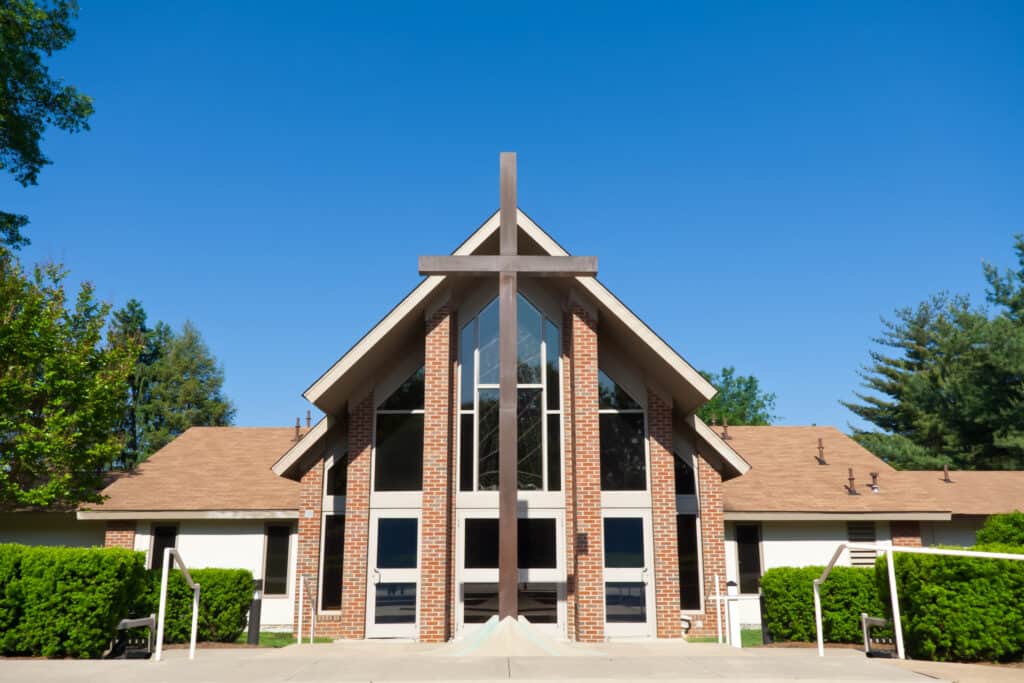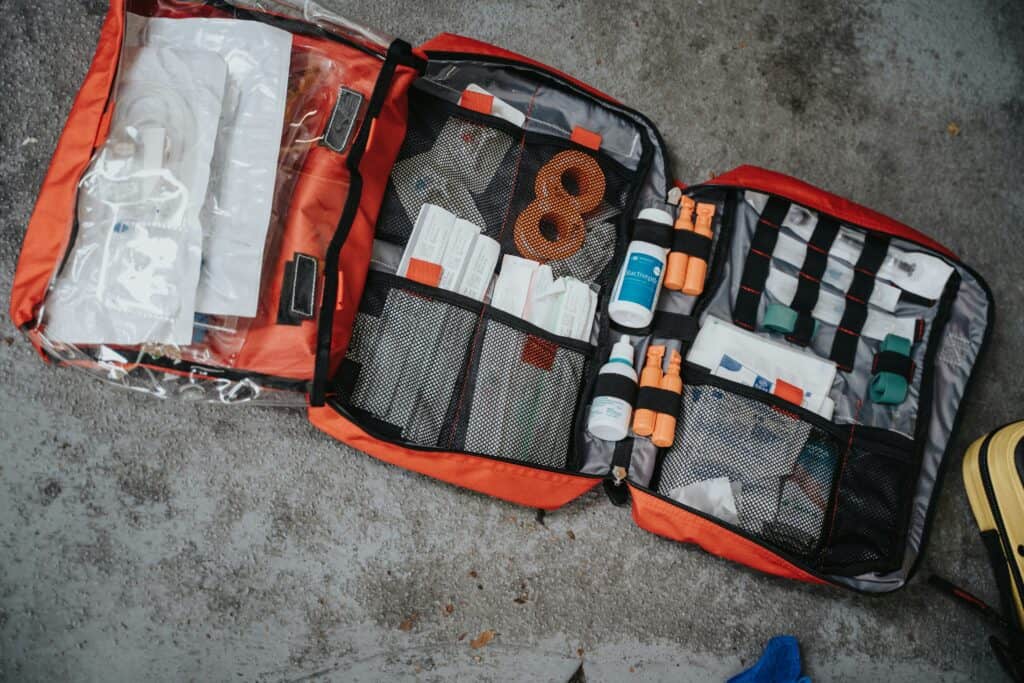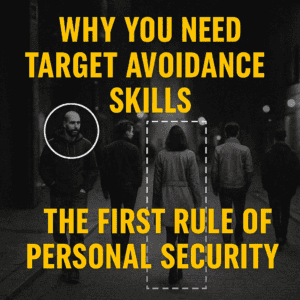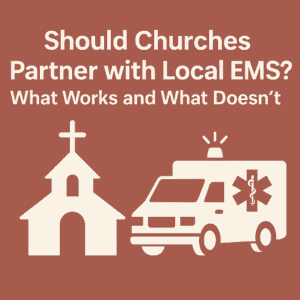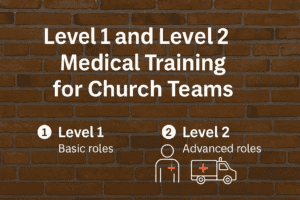In recent years, security concerns surrounding houses of worship have become increasingly significant.
As these spaces face growing threats of violence and other emergencies, religious institutions must proactively implement measures to ensure the safety and well-being of their congregations.
By exploring best practices for improving church security, religious leaders and facility managers can create environments that not only foster spiritual growth but also provide peace of mind for all who attend.
Many security experts suggest that incorporating safety protocols within day-to-day operations is essential to protecting churches and their communities.
Taking a multifaceted approach to security, houses of worship should consider investing in physical enhancements, staff and volunteer training, and emergency planning.
From securing entry points to developing incident command protocols, organizations can take proactive steps to create a safer environment for worshippers without overwhelming costs.
Understanding the unique vulnerabilities faced by religious institutions is crucial when working to defend against potential threats.
Through risk assessments and developing comprehensive security strategies, houses of worship can cultivate safe spaces that address the varied needs of their congregations while maintaining a welcoming atmosphere.
By prioritizing safety and security, religious leaders can ensure that their communities continue to thrive in the face of adversity.
Understanding Church Security
Importance of Safety and Security
Safety and security are vital for churches and other houses of worship.
These places are meant to be sanctuaries where individuals can gather to express their faith and serve their communities.
Ensuring that congregations and religious leaders can worship without fear is essential to maintaining a healthy and vibrant spiritual community.
Implementing best practices to enhance security measures helps to minimize the risks associated with potential threats and vulnerabilities, allowing church members to practice their faith with confidence and peace of mind.
Threats and Vulnerabilities
Churches and houses of worship, like any other public space, can be susceptible to various risks.
Some threats may come from internal sources, while others may be random acts of crime or terrorism.
Understanding common vulnerabilities can help churches develop appropriate security measures.
Internal threats: These may come from individuals within the congregation, such as emotionally disturbed persons, those with a grudge against the church or its leaders, or people seeking personal gain. A proactive approach to identify potential risks and providing support to those individuals can minimize internal threats.
External threats: These can include criminals targeting the church for theft or vandalism, or potentially more dangerous situations such as active shooters or terrorist attacks. Churches should be prepared for a wide range of external threats by implementing appropriate safety protocols and training their safety and security teams.
In addition to these threats, houses of worship can be vulnerable to natural disasters, such as floods, fires, or storms.
Emergency preparedness is also an essential component of comprehensive church security planning.
To address these threats and vulnerabilities, churches must develop a robust safety and security plan that considers the unique needs of their congregation.
This plan should include preventative measures, incident response protocols, and ongoing training for staff and volunteers.
By proactively addressing safety and security concerns, houses of worship can provide a welcoming and secure environment for their congregations to gather and practice their faith.
Creating a Security Plan
Assessing Potential Risks
The first step in creating a church security plan is to assess potential risks facing the congregation.
Considering various emergency situations, such as natural disasters, medical emergencies, and security threats, will help church leaders build a comprehensive plan to protect members and property.
This assessment should involve identifying weaknesses in the current security measures and any potential threats specific to the church’s location and community.
To effectively assess risks, church leaders can:
- Evaluate past incidents and existing security protocols
- Consult with local law enforcement for relevant threats and best practices
- Conduct a site survey, identifying areas that may be vulnerable to break-ins, vandalism, or other security breaches
Developing a Security Guide
After assessing potential risks, church leaders should create a detailed security guide outlining the policies and procedures to be followed in various emergency situations.
The security guide should include:
- Clear roles and responsibilities: Assign specific tasks to church staff and volunteers, such as handling medical emergencies, evacuating members, or coordinating with first responders.
- Communication plans: Establish channels of communication for emergency situations, including phone trees, radios, or text alerts to keep everyone informed and coordinated.
- Preventative measures: Implement security measures, such as door locks, surveillance cameras, and alarm systems to deter potential threats and provide evidence in case of incidents. For example, CISA’s Mitigating Attacks on Houses of Worship Security Guide offers valuable resources for enhancing church security.
- Training and drills: Regularly conducting training sessions and drills will ensure that church staff and volunteers are well-prepared for emergency situations and know how to implement the security plan effectively.
- Regular updates and reviews: Continuously monitor and update the security plan, considering new threats, changing circumstances, and lessons learned from past incidents.
By diligently assessing potential risks and developing a comprehensive security guide, church leaders can take essential steps toward enhancing the security of their congregation and ensuring a safe environment for worship and fellowship.
Implementing Security Measures
Facilities Management
Managing church facilities effectively involves identifying potential security risks and addressing them accordingly.
Regular assessment of the church premises can help identify vulnerabilities at entrances and exits, which should be limited and well-monitored to ensure congregants’ safety. It is also crucial to establish clear evacuation procedures for emergencies. Staff and volunteers should receive training on these procedures to ensure a coordinated response during emergencies.
Security Equipment
Investing in security equipment, such as security cameras, can significantly improve the safety of the church. These cameras should be strategically placed to cover sensitive areas, entry points, and exits. Additionally, access control systems can help manage entry and reduce the risk of unauthorized access. Consider implementing other security measures, such as alarm systems and communication devices, to further enhance security and facilitate efficient communication during an emergency.
Collaboration with Local Authorities
Working with Law Enforcement
Collaborating with law enforcement is crucial for improving church security.
Establishing strong relationships with local police departments can provide valuable guidance and support.
Regular meetings with representatives of local law enforcement can help houses of worship stay up-to-date on security threats and risk assessments.
These meetings can also provide relevant and timely information on the latest security technologies and industry best practices.
Another key aspect of this partnership is open communication and information sharing.
By reporting security concerns and incidents to the police promptly, churches can ensure proper response and follow-up.
Additionally, inviting law enforcement officers to conduct periodic security audits can identify potential vulnerabilities and provide recommendations for enhancing safety measures.
Developing Security Protocols
Developing comprehensive security protocols in cooperation with local authorities is essential for mitigating potential security threats.
Churches should work closely with law enforcement to create and implement well-documented plans that cover evacuation, lockdown, and emergency response procedures.
Determining specific responsibilities for church staff and volunteers can help maintain order and prioritize safety during an emergency situation.
Regular training sessions should be conducted to familiarize the congregation with these protocols, while periodic drills can help ensure proper execution under stress.
Partnering with local authorities to develop customized security protocols based on incident history, church size, location, and capacity can result in a more tailored and effective safety plan.
This collaboration allows for a proactive approach to mitigating attacks on houses of worship, while maintaining an open and welcoming environment for all members.
Establishing a Security Team
Utilizing Volunteers and Staff
To improve church security, it’s essential to establish a security team composed of both volunteers and staff members.
Volunteers play a crucial role in enhancing the safety of the church and its community, while staff members bring professional expertise to the team.
Engaging volunteers and staff in security and safety teams can help prevent incidents and offer comfort to your congregation.
When selecting team members, consider carrying out background checks to ensure the safety of children and other vulnerable individuals within the church community.
Roles and Responsibilities
The security team should have clearly defined roles and responsibilities for each member, ensuring proper coordination and response in case of security incidents.
In addition to handling potential threats, the team should also focus on preventive measures.
For example, they can develop and implement safety policies, conduct regular assessments of potential risks, and collaborate with local law enforcement agencies.
The key roles and responsibilities within the security team may include:
- Oversight Board or Council: The church board oversees the creation and management of the security plan and the security team. Board members must focus on the church’s mission while working with team members to finalize and execute the plan.
- Security Coordinator: This person will lead the team’s efforts in implementing security measures and coordinating with other staff and volunteers.
- Security Personnel: These individuals are responsible for regularly patrolling the church premises, monitoring entrances and exits, checking security systems, and responding to incidents.
By carefully selecting and training volunteers and staff members, your church can create an effective security team that ensures the safety and well-being of its congregation.
Training and Preparedness
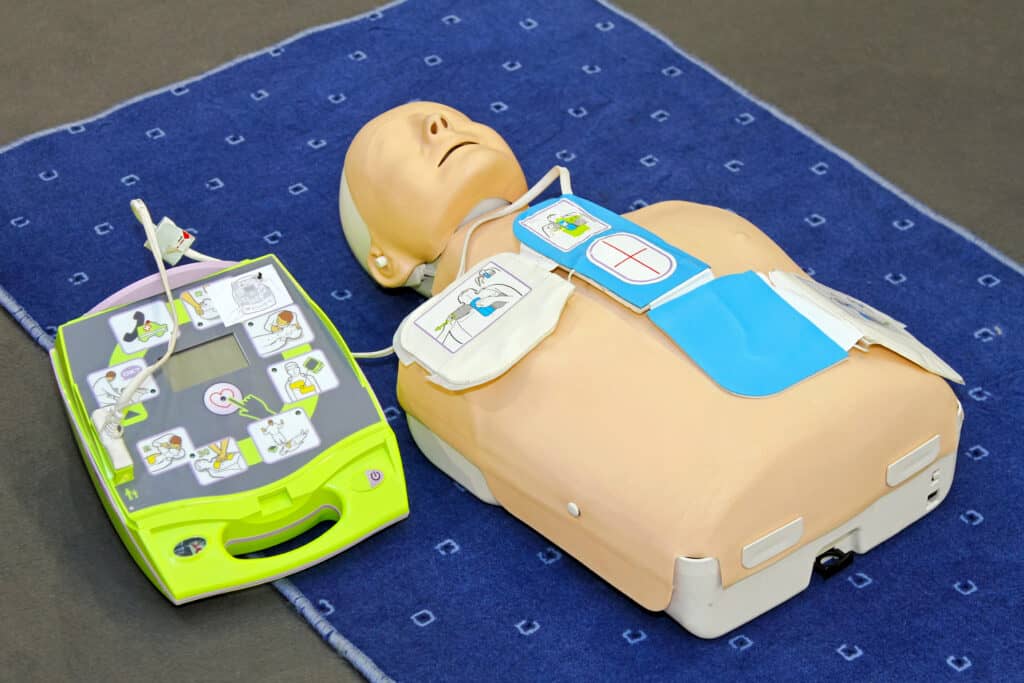
Safety and Emergency Response Training
Providing safety and emergency response training to church staff and volunteers is crucial for ensuring the security of your place of worship.
A well-prepared team can handle various situations, including acts of violence and natural disasters.
Regular training sessions should include topics such as:
- Active shooter response: Educate your team on how to react in an active shooter situation. This may involve lockdown procedures, evacuation routes, and hiding places.
- Medical emergencies: First aid and CPR training can equip your team members with essential skills to handle medical emergencies, increasing the likelihood of a successful outcome.
- Fire safety: Teach your team how to identify fire hazards and operate fire extinguishers. Make sure everyone knows the appropriate evacuation routes in case of a fire.
- Natural disasters: Inform your team about the specific risks in your area, and provide guidance on the best response for each type of emergency, such as earthquakes, floods, or tornadoes.
Maintaining Communication
Effective communication plays a vital role in managing emergencies.
Establishing and practicing communication protocols will help your church staff and volunteers respond efficiently and appropriately in various situations.
Here are some recommendations to maintain clear communication during emergencies:
- Emergency notification system: Implement a church-wide notification system, using phone calls, text messages, or apps, to quickly alert staff and congregants about emergencies or security threats.
- Two-way radios: Equip your security team with two-way radios to maintain real-time communication during events, ensuring a coordinated response to any situation.
- Designated spokespeople: Assign specific individuals to be in charge of communicating with first responders, media, and community members. This will help ensure a consistent and accurate flow of information during a crisis.
By investing in safety and emergency response training and establishing efficient communication protocols, your church can significantly improve its preparedness, ensuring the well-being of your congregation and minimizing the impact of emergencies.
Continuous Improvement
Leveraging Case Studies
An important aspect of improving church security is to learn from others’ experiences.
Leveraging case studies involving emergency situations or targeted violence can provide valuable insights into best practices for protecting congregations.
By analyzing such cases, churches can identify vulnerabilities and effective countermeasures.
These examples can facilitate discussion and training among security teams and congregation members, promoting vigilance and preparedness.
Regular Risk Assessment
Conducting regular risk assessments is crucial for identifying potential risks and evaluating the effectiveness of existing security measures.
Engaging both internal teams and external security experts can enhance the process, ensuring a comprehensive evaluation of the church premises, operations, and procedures.
By regularly assessing risks, churches can prioritize resources and focus on the most critical aspects of security.
Some areas to consider during risk assessments include:
- Physical barriers and building access controls
- Security team training and background checks
- Communication systems and protocols
- Emergency evacuation plans and drills
- Coordination with local law enforcement
Updating
As potential threats and vulnerabilities change, it is essential to stay up-to-date with the latest security practices.
Regularly reviewing and updating security protocols, incorporating industry and government guidelines, helps ensure a more robust security posture.
In addition, churches should maintain open lines of communication with local law enforcement, community partners, and other houses of worship to exchange information and stay informed about emerging threats and best practices.
By embracing a culture of continuous improvement in church security, congregations can provide a haven for their members while actively mitigating the risks associated with targeted violence.
Invest time and resources in leveraging case studies, conducting regular risk assessments, and updating security measures to protect against evolving threats effectively.
Balancing Security with Faith
Fostering a Positive Environment
A crucial aspect of enhancing church security is creating a positive and welcoming environment without compromising safety.
It’s essential to strike a balance between the need to protect the congregation and staff and maintaining an open atmosphere where everyone feels welcome.
Implementing security measures that are less intrusive while being effective in securing the church is one way to maintain this balance.
For instance, discreet surveillance cameras, secure check-in systems for children, and well-trained volunteers can provide security without creating an unwelcoming environment.
Prayer and Trust in God
Faith plays a key role in balancing church security with prayer and trust in God.
This does not mean ignoring security concerns or relying solely on divine intervention.
Instead, it involves acknowledging the spiritual aspect of security and seeking guidance and strength from God.
Praying for the protection of the church, its congregation, and staff is vital for maintaining a sense of faith in challenging times.
Additionally, incorporating spiritual growth and education in church security plan development can encourage church members to turn to their faith and trust in God’s providence while considering practical safety measures.
In conclusion, balancing faith and security is essential for protecting places of worship while still fostering a welcoming environment.
By considering both the practical aspects of security and the spiritual side of protection, church leaders can effectively manage potential threats and maintain a strong community based on trust and faith.
Frequently Asked Questions
What are the essential components of a church security plan?
A church security plan should include measures such as video surveillance, alarm systems, and a dedicated security team to effectively protect the congregation.
Church leaders should designate roles to be taken in an emergency, such as contacting authorities, communicating with the media, and directing evacuations if necessary.
Additionally, it is essential to identify trained professionals within the membership, such as medical professionals, law enforcement officers, or individuals with military or security backgrounds, who can contribute their expertise to the security plan.
How can a church implement effective safety measures?
Churches can implement safety measures by developing a detailed security plan, designating roles and protocols during emergencies, and routinely reviewing and updating the plan to ensure its effectiveness.
They should also consider conducting background checks on staff and volunteers, controlling access to the church facility, and maintaining an incident command protocol so that the security team is responsible for decision-making during emergency situations.
What training should be provided to a church security team?
A church security team should be trained in emergency preparedness, first aid and CPR, crisis management, and communication skills.
They may also benefit from specialized training in areas such as active shooter response or situational awareness.
Whenever possible, the church should provide regular training and refresher courses to keep the security team up to date on the latest best practices and techniques.
What are the roles and responsibilities of a church security team?
The church security team is responsible for maintaining a safe environment for the congregation through a combination of prevention, protection, and response.
They should keep an eye out for suspicious activities, monitor access to the facility, and provide assistance in emergencies.
Additionally, they conduct regular assessments to evaluate the effectiveness of the security plans and make necessary adjustments.
How can a small church create a safety plan?
Small churches, like larger ones, should develop a security plan tailored to their specific needs and resources.
They can start by conducting a risk assessment to identify potential threats and vulnerabilities, and then work on creating a plan that addresses these concerns.
Some cost-effective measures a small church can implement include controlling access to the building, creating an emergency communication plan, and establishing a volunteer security team.
How can a church continuously improve its security measures?
Churches can continuously improve their security measures by conducting regular assessments, reviewing and updating their security plans, and incorporating feedback from the congregation and security team.
They should also keep themselves informed on the latest security trends and best practices, and adapt their plans accordingly.
Regular training and exercises will go a long way in maintaining a high level of security and preparedness for the church.

